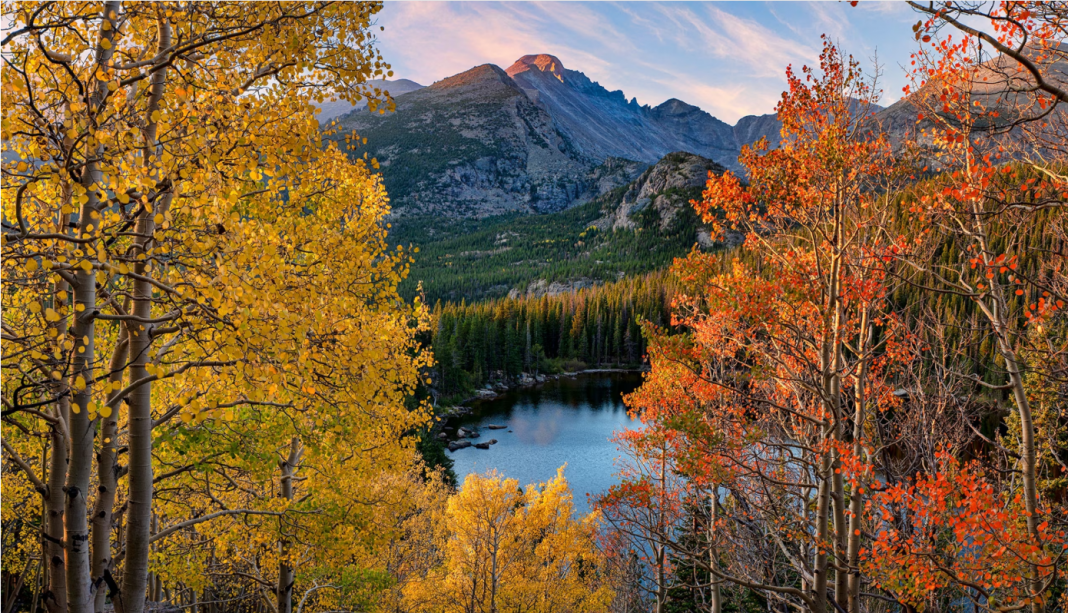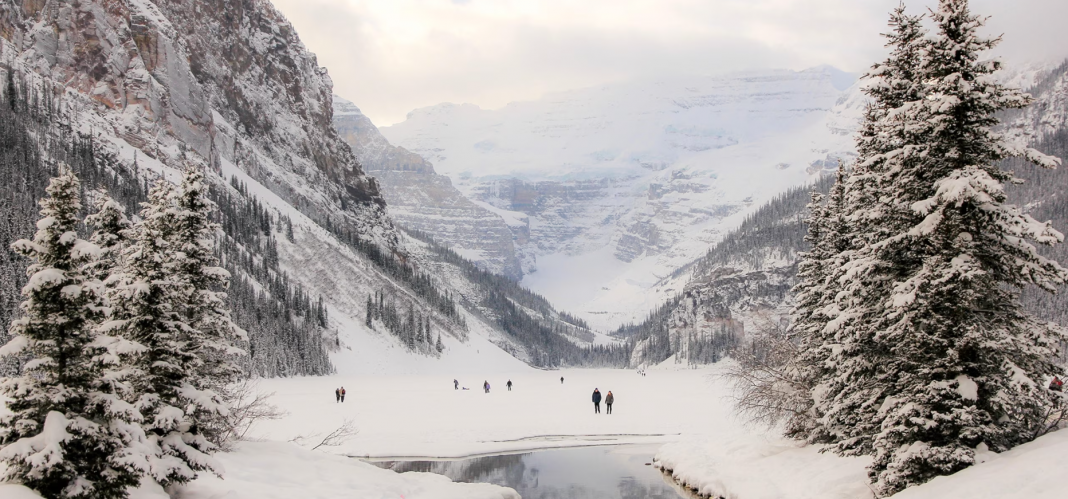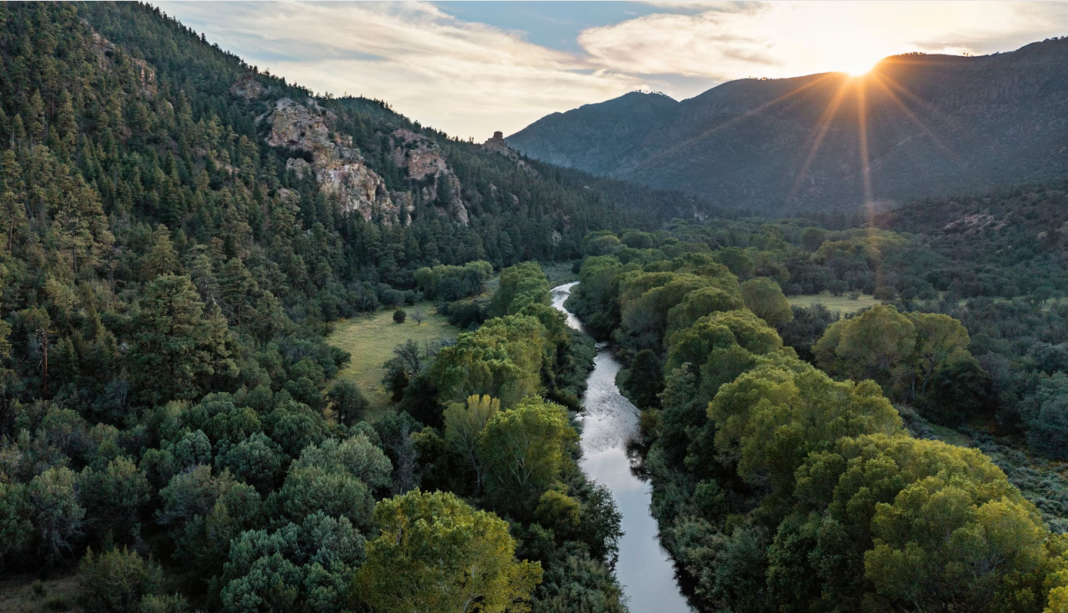Milder temperatures, fewer folks, wildlife migrations, and special events color these natural wonders come autumn.
Autumn colors frame this stunning view of Colorado at Rocky Mountain National Park’s Bear Lake.
Photograph by Brad McGinley/Getty Images
Post-pandemic, U.S. national parks have attracted record crowds as people flock to the great outdoors for fresh air and wide-open spaces. At least 10 parks—including Yosemite, Zion, Arches, and Acadia—have been forced to limit visitation during the summer peak season to combat lack of parking, bumper-to-bumper traffic, and overcrowded trails and other facilities.
If that’s not enough to make people think twice about visiting national parks in the summer, climate change has become another mitigating factor. With an average daytime temperature of 121.9°F, Death Valley National Park endured its hottest month ever in July 2024. Other Sunbelt parks have also endured record heat this past summer.
Yet for those who still want to visit desert and subtropical parks, there’s an easy solution: taking that long-awaited road trip in the fall, when these parks tend to have far fewer visitors and much milder weather.
This is also prime time for natural phenomena like supermoons and animal migrations, as well as festivals and other special events. And for those who can’t imagine autumn without multicolored leaves, there’s also the possibility of radiant fall foliage. Here are 10 parks that offer ideal visiting conditions in the fall.
1. Everglades National Park (FLorida)
Summers in this sprawling South Florida park are notoriously hot, humid, buggy, and wet. This area is also affected by hurricanes, which can really put a crimp on travel plans. By the middle of October, temperatures have dropped to a much more comfortable level for hiking, biking, and paddling in the park. The peak of the hurricane season has passed, and you can feel the daily transition from the wet to the dry season.
As water levels drop, it becomes easier to spot (and photograph) water dwelling creatures like gators and manatees. Fall is also prime bird watching season, as various migratory species make their way down the Atlantic Flyway to spend winter in the park and or pass through on their way to the tropics.
2. Congaree National Park (South Carolina)
One of the least known (and visited) national parks, Congaree was established in 2003 to protect that largest old-growth bottomland hardwood forest left in the American Southeast.
Congaree bucks the trend of higher summer visitation because those who frequent the South Carolina park already know that fall is one of the best times for paddling the 50-mile (80-km) Congaree River Blue Trail or the 15-mile (24-km) Cedar Creek Canoe Trail.
Average daily temperatures in the 70s or low 80s, autumn’s milder weather also makes it easier to walk the park’s boardwalk trails in search of migratory birds or fall colors. And no matter what season, Congaree is one of the few national parks that never charges an entrance fee.
3. Natchez Trace Parkway (Mississippi Alabama, Tennessee)
Rambling 444 miles (714 kilometers) between the Mississippi River and Nashville, the Natchez Trace flaunts more than 10,000 years of American history and some of the prettiest scenery in the entire South.
Unless you’re into heat, humidity, and bugs, summers along the route are downright oppressive. But autumn is sublime, the parkway’s campgrounds and picnic areas flanked by fall foliage, and migratory birds making their way south along the Mississippi Flyway.
The fall season also brings special events along the parkway like the Natchez Balloon Festival (October 18-19) and Dancing With The King (October 18-20) in Tupelo, Mississippi, the hometown of Elvis Presley.
4. Big Bend National Park (Texas)
Big Bend blisters in the summer, but moderate fall temperatures make it an ideal destination for desert landscapes, canyon camping, or lazy trips down the river. Photograph by Bryan Schutmaat, Nat Geo Image Collection
The huge park near the southwest corner of Texas often flies under the radar because it’s so far off the beaten path. But it’s worth the drive for those who cherish wild rivers, astounding desert landscapes, and quirky history.
Big Bend is blistering hot in the summer, with triple digit temperatures every day at lower elevations. By the end of September, 80-degree temperatures are the norm, especially in the high altitude, forested Chisos Basin, located in the heart of the park.
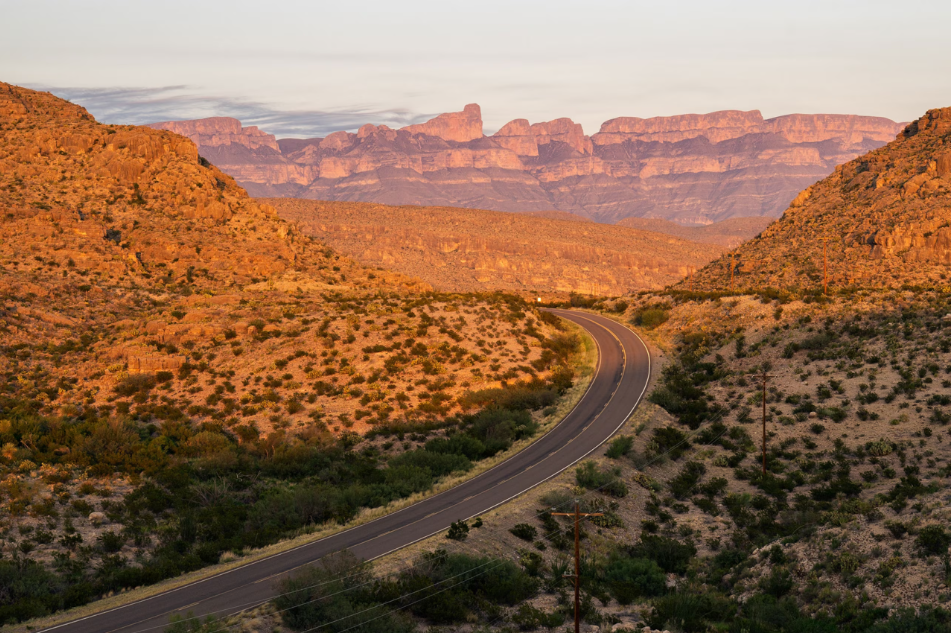
Because the rainy season stretches into September, water is still high on the Rio Grande. Which means almost ideal conditions for canoe camping in spectacular Santa Elena Canyon and farther downstream.
5. Rocky Mountain National Park (Colorado)
Autumn provides a striking backdrop for one of the most spectacular displays at Rocky Mountain National Park: elk mating season. Photograph by River North Photography/Getty Images
This park is the home of the annual autumn migration of hundreds of elk from the high country to meadows (or “parks”) at lower elevations to mate and propagate their species. The males compete for the right to court female elk by displaying their massive antlers, releasing a musky odor, sometimes fighting, and always emitting a deep, sonorous bugle that epitomizes the rutting season.
This wildlife spectacular is set against a backdrop of Rocky Mountain National Park’s other fall phenomenon: golden aspen trees.
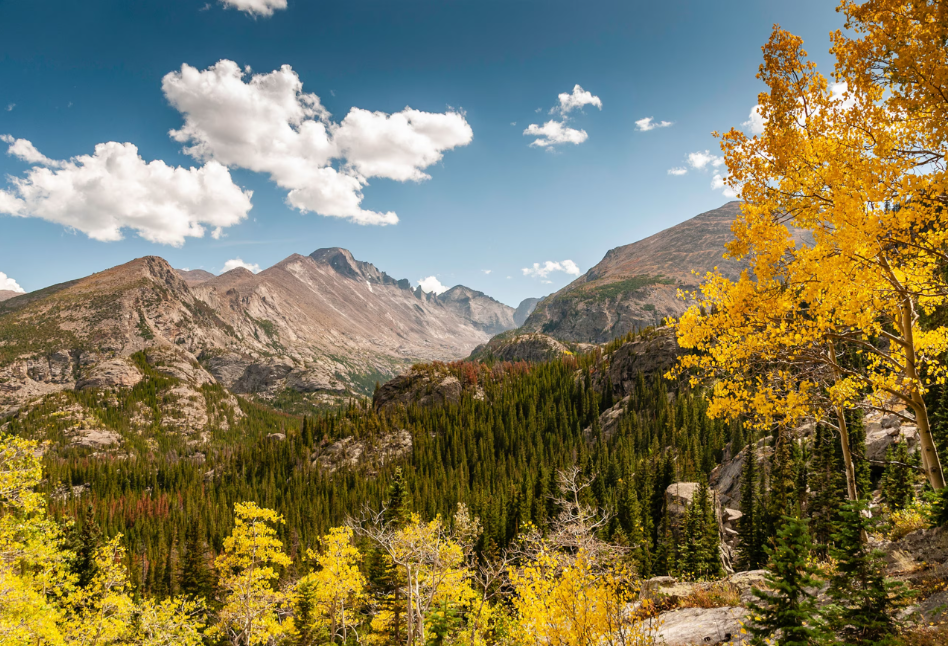
6. White Sands National Park (New Mexico)
Cooler temperatures are just one of the reasons to visit White Sands in the fall, especially for those backpack-camping the park’s wilderness trail or surfing the ultra-bright dunes on discs or sleds.
Another reason to visit in the fall are awesome full moons that illuminate the unearthly landscapes of this New Mexico desert park. White Sands commemorates the autumn supermoons—when the celestial body appears larger than normal because it’s closer to the Earth—with ranger-led Full Moon Hikes (September 18 and October 16) and Full Moon Nights that feature live outdoor music, specifically a jazz band on September 17 as well as Native American musician and storyteller Randy Granger on October 17.
7. Saguaro National Park (Arizona)
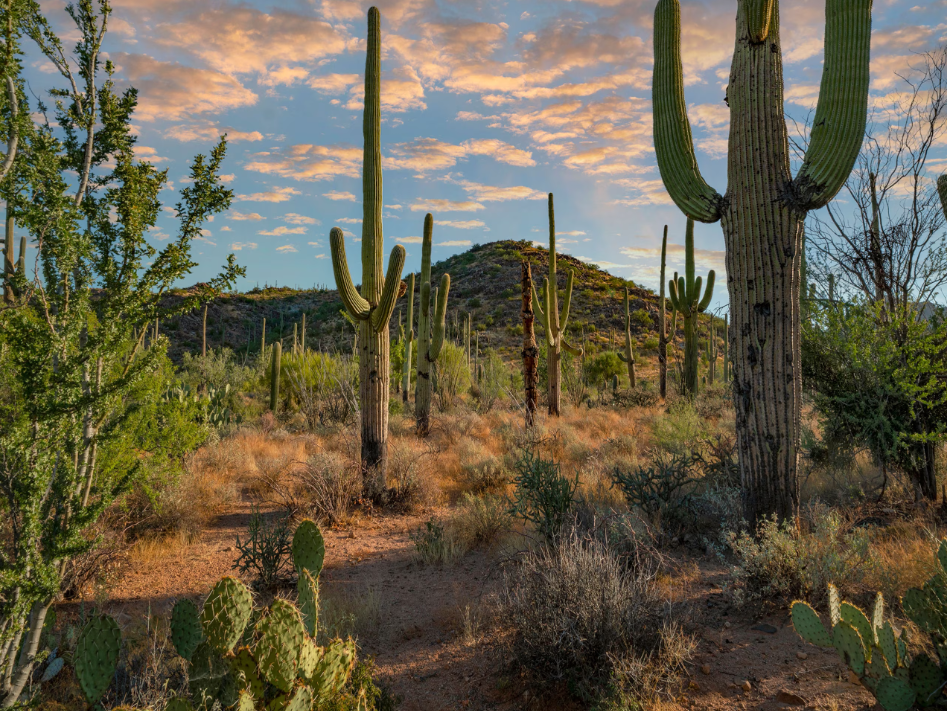
Saguaro cacti dot the desert landscape at Arizona’s Saguaro National Park. In the fall, you’ll likely be able to grab some alone time as you wander among the succulents.Tim Fitzharris/Minden Pictures
As Tucson’s big backyard, this southern Arizona desert park tends to be more popular with locals than long-distance visitors. They hike, bike and horseback ride in the park during the springtime for the wildflowers, largely avoid summer when it’s just too hot, and relish winter when the saguaro cactus are sometimes mantled in snow.
But there’s a window in the fall—between late September and the middle of October—when temperatures are mild, visitation is low, and you might have a trail through the giant succulents all to your lonesome, especially in the wilder Rincon Mountain area on Tucson’s west side.
8. Cappitol Reef National Park (Utah)
Fall is harvest season at Capitol Reef National Park—a picture-perfect setting for picnicking with peaches, pears, and apples.
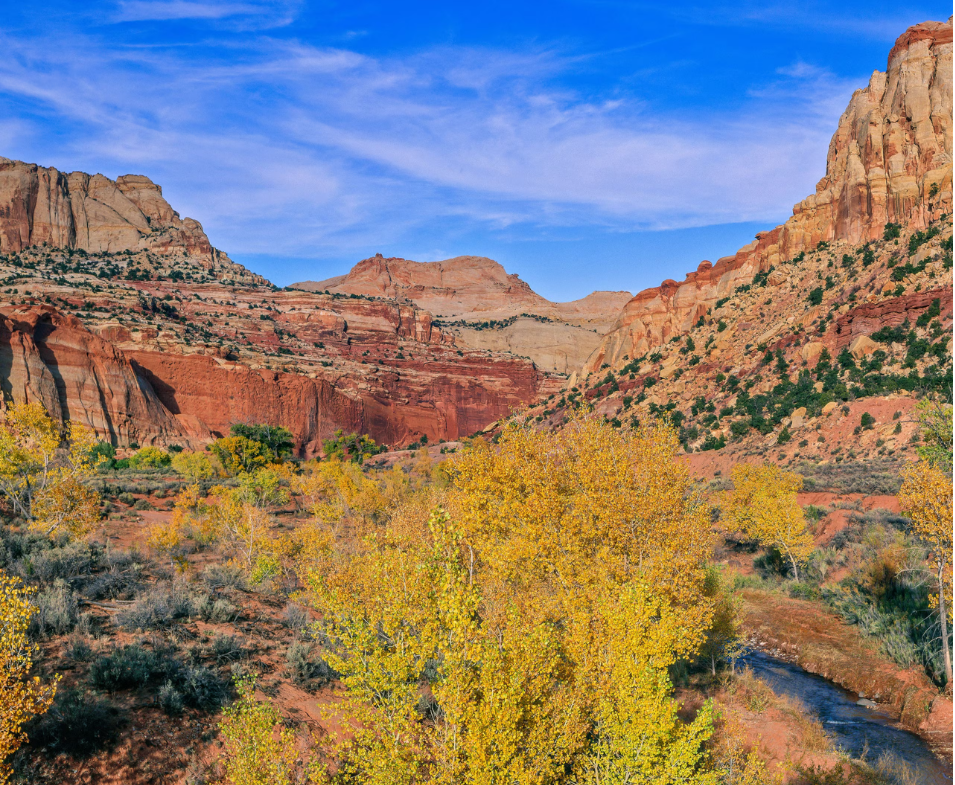
As one of the largest national parks in the Lower 48 states, Capitol Reef is never overcrowded, not even during the summer vacation season.
But there’s a special reason to visit in the fall—harvest season in the orchards of historic Fruita, a 19th-century Mormon pioneer settlement along the Fremont River near the visitor center.
For a small fee, visitors can self-pick the heirloom peaches, pears, and apples with ladders and fruit-picking poles provided by the Park Service. Afterward, they can enjoy the literal fruits of their labor at the nearby picnic area and campground.
9. Joshua Tree National Park (California)
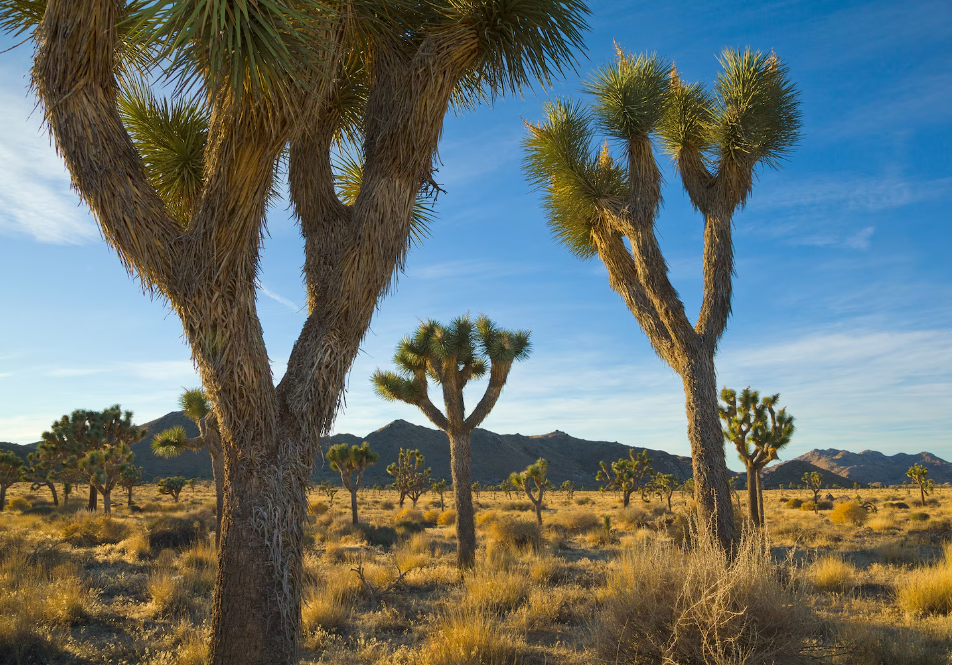
It’s hard to avoid crowds at Joshua Tree National Park, but you might have a chance if you visit during a weekday in October or November—after the summer crowds leave but before the holiday hordes arrive.Photograph by John Eastcott and Yva Momatiuk, Nat Geo Image Collection
An easy day-trip for the 24 million people who call Southern California home, Joshua Tree is crowded on weekends or holidays no matter what the season.
To avoid the masses, plan to visit on a weekday in October or November, after the Mojave Desert weather has finally chilled out and before the holiday hordes descend on popular selfie spots like Skull Rock and Cholla Cactus Garden.
By October, the average daytime temperature has dropped into the low 80s or high 70s, perfect for hiking, biking, horseback riding the 36.5-mile (58-km) California Riding & Hiking Trail that runs east-west across the park.
10. Death Valley National Park (California)
Despite the intense summer heat, hundreds of people visited Death Valley this past July to have their picture snapped beside temperature signs reading 130°F.
Late fall is a much more reasonable time to visit the hottest spot in the Western hemisphere, when it’s safe to hike at midday and cool enough to camp without waking up in the middle of the night drenched in sweat.
Autumn also ushers in the park’s biggest annual event, the Death Valley ’49ers Encampment (October 6-10). This living history fest marks its 75th anniversary this year with a costume contest, wheelbarrow race, pet parade, and other activities.
Cre: National Geographic




